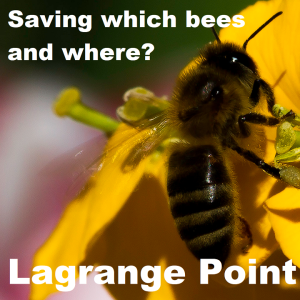Episodes

Sunday Jun 30, 2019
Episode 333 - Saving which bees and where
Sunday Jun 30, 2019
Sunday Jun 30, 2019
Saving the bees has gotten widespread understanding, but it is more nuanced than a simple sound bite. Which bees are in danger and where? How many bee species are out there and are under threat? Can domesticated bees spread disease to wild populations? How do wild flowers help feed bees but also spread disease? Can different types of crop cycles help both wild and domesticated bees thrive? We know of colony collapse disorder and pesticides, but what other threats are out there to bee populations? Does the urban sprawl play a role in destabilising the gender balance of the bee populations? Why do bee populations drop off as you approach the city?
References:
- Samantha A. Alger, P. Alexander Burnham, Humberto F. Boncristiani, Alison K. Brody. RNA virus spillover from managed honeybees (Apis mellifera) to wild bumblebees (Bombus spp.). PLOS ONE, 2019; 14 (6): e0217822 DOI: 10.1371/journal.pone.0217822
- Dimitry Wintermantel, Jean-François Odoux, Joël Chadœuf, Vincent Bretagnolle. Organic farming positively affects honeybee colonies in a flower-poor period in agricultural landscapes. Journal of Applied Ecology, 2019; DOI: 10.1111/1365-2664.13447
- Gordon Fitch, Paul Glaum, Maria-Carolina Simao, Chatura Vaidya, Jill Matthijs, Benjamin Iuliano, Ivette Perfecto. Changes in adult sex ratio in wild bee communities are linked to urbanization. Scientific Reports, 2019; 9 (1) DOI: 10.1038/s41598-019-39601-8
Version: 20241125


No comments yet. Be the first to say something!